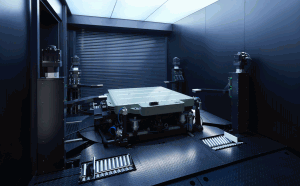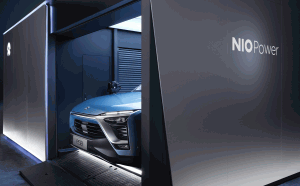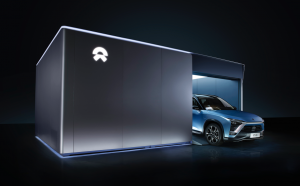While most EV makers and battery producers scramble to find a way to reduce battery charging times, Nio – known as China’s Tesla – is taking a different approach by swapping batteries as a way of recharging in the same amount of time it takes to refill a gas tank.
Owners of Nio’s ES6 and ES8 sport-utility vehicles can already access the entirely automated battery swap service it calls “Power Swap. It’s already available in nine cities in China and it’s expected to grow to at least 40 by the end of this year.
Basically, the driver enters a swap station and waits while an autonomous robot removes a vehicle’s drained battery and replaces it with a fully charged one.
Nio offers a subscription to owners. For $200 per month, customers can utilize company-provided batteries rather than owning the actual battery that’s attached to their vehicle. It’s essentially the same set up used by owners of gas grills across America. Roll up, give up the empty in exchange for a full tank.
(Tesla demoed a 90-second battery swap six years ago. For the story, Click Here.)
Nio isn’t the only company that’s considered using this “charging” method. Another EV maker, Israel’s Better Place also tried using battery swaps as the primary method for recharging. However, the company, which wanted to follow Tesla’s trajectory to success, went bankrupt with the battery swap plan part of the reason.

Nio vehicles are positioned over this lift and a robot removes the old battery and puts in the new charged battery.
However, Nio may have an ace in the hole: the Chinese government. The government provide Nio and other electric companies with subsidies and charging infrastructure investments. This type of help essentially assures Nio won’t suffer Better Place’s fate.
Additionally, Tesla actually showed off a similar concept six years ago. A video of the concept shows a Tesla employee filling up a car’s gas tank while at the same a robotic machine automatically removed a Model S battery and replaced it with a fully charged one.
After just a minute and 33 seconds, the Tesla Model S drove off. Another sedan drove on, this one with Musk behind the wheel. His vehicle had required 96 seconds for the swap. The gas-powered vehicle was still filling up as he began to address the crowd.
(Click Here for more about Tesla’s proposed battery swapping station.)
The company never put the technology into full production. It did have one swap shop in California, but it closed after less than a year. The plan was to have battery-swap capabilities at the Supercharger stations, at a cost about $500,000 per facility to implement. Each station would have about 50 batteries in stock, and while they would all be new, initially, they could soon get plenty of use, Musk suggested.

Nio has nine battery swap locations running and may have as many as 80 in China by the end of the year.
The California-based EV maker filed a patent application for a portable battery changer design that would allow technicians to make the swap in as little as 15 minutes. A quick scan of the diagram in the application shows many similarities to the model it demonstrated in 2013.
The version in the application appears to be smaller and portable, allowing them to be set up in areas that do not have superchargers.
(To see more about Nio’s planned $2 billion IPO in the U.S., Click Here.)
Tesla has designed the Model S from the beginning to be removed and quickly replaced. The application showed a design for the Model S and Model X, but it’s not known if the plan accounted for Model 3 sedans and the upcoming Model Y and pickup truck.

